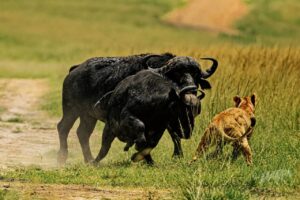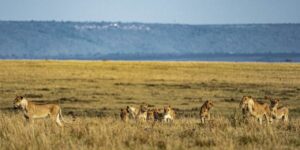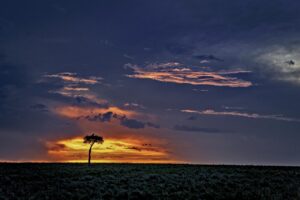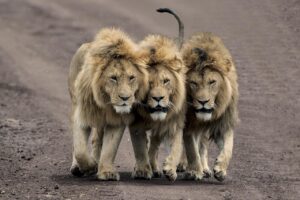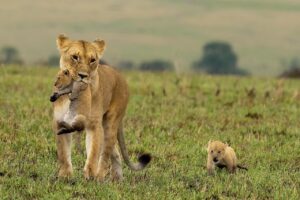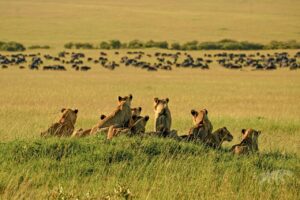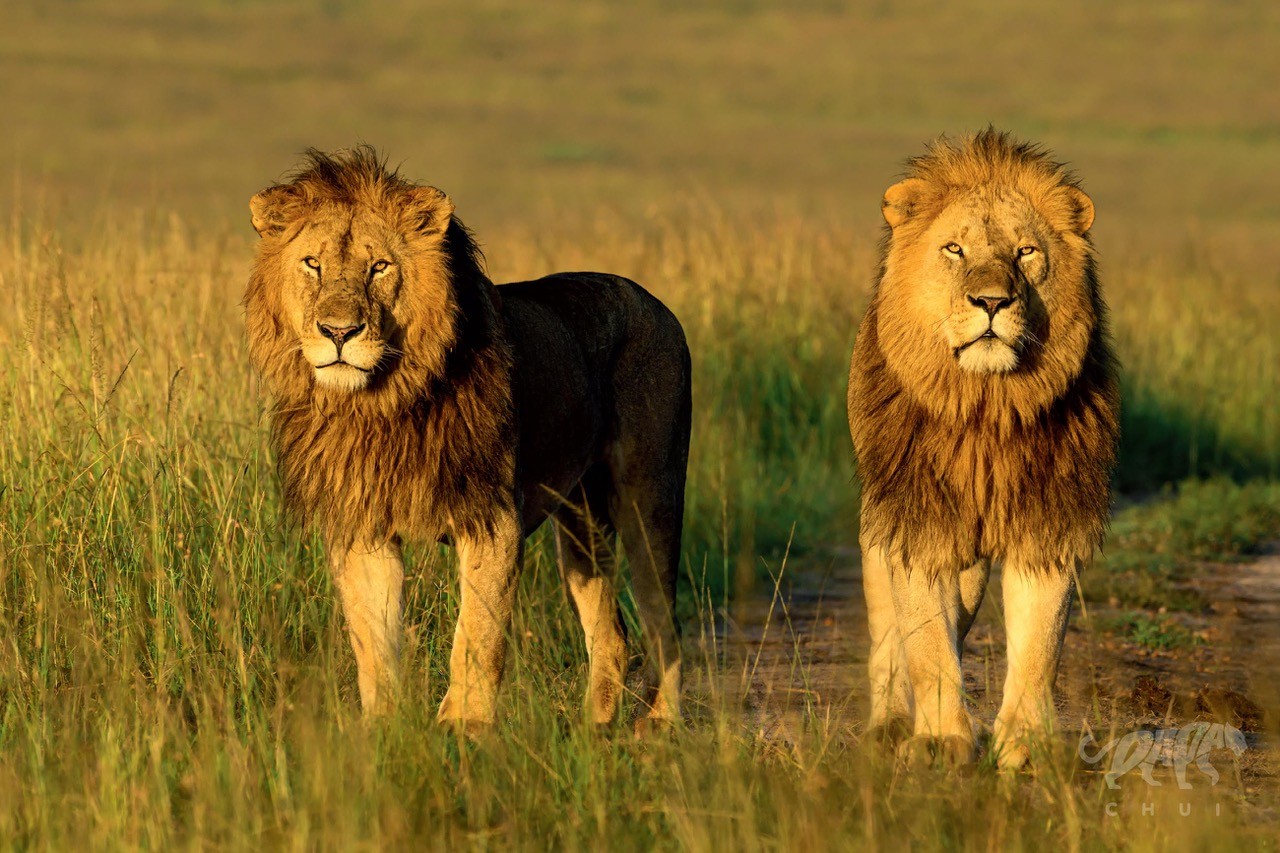The story of the Rongai pride from Maasai Mara is a fascinating tale of cooperation, strategy, and survival in the African wilderness. This lion pride, known for its ability to hunt large animals like buffalo, has become a symbol of strength and bravery.
Hunting Buffalo: Challenge and Risk
The lions in the Rongai pride have been observed for many years, and their ability to hunt such large and dangerous animals as the African buffalo is remarkable. The buffalo is one of the most dangerous animals in Africa, capable of easily killing a lioness or even an adult male if the hunt goes wrong. Buffalos are massive and strong animals, weighing up to 900 kg, and are known for their courage and defense using sharp horns. Hunting them is highly risky for lions but offers a large reward in the form of a significant amount of meat.
Lions are masters of stealth. They use the tall grass and terrain of Maasai Mara to approach the buffalo unnoticed. They usually move against the wind so the buffalo cannot smell them, getting as close as possible before launching an attack. In the pride, every lion has a role. The hunters are usually lionesses who work together to confuse and surround the prey. Some lionesses provoke the buffalo to move while others wait for one to stray from the herd.
Cooperation and Risks of the Rongai Pride
The Rongai pride is known for its boldness in daring to hunt even healthy adult buffalo, which is incredibly challenging. Once the lions select a buffalo, they begin the chase. Lions are not the best long-distance runners, so they rely on endurance and teamwork. When they get close enough, one or more lionesses leap onto the buffalo’s back, trying to bite its neck or muzzle. The buffalo fights back with all its strength, making the hunt extremely dangerous.
The lionesses try to slow the buffalo by biting its legs or sides, while others hold it down and attempt to bring it to the ground. Often, it requires the cooperation of several lionesses to completely immobilize the buffalo. Once the buffalo is brought down, the lionesses usually finish it by suffocating it with a bite to the neck. It’s a harsh but necessary battle for survival. Afterward, the whole pride, including cubs, has enough food for several days.
Even though the Rongai pride is highly skilled, hunting buffalo is never without risk. Buffalo herds often respond by grouping together and collectively defending the attacked member. When buffalos fight back, they can chase the lions and strike them with their sharp horns. There have been many instances where lions were seriously injured or even killed during an unsuccessful attempt to take down a buffalo.
When the hunt is successful, the pride has enough food for several days. A buffalo provides a large amount of meat, allowing the lions to regain their strength. However, the lions must eat quickly, as other predators like hyenas or scavengers are soon attracted, trying to steal their prey.
The story of the Rongai pride perfectly illustrates the power of cooperation in the wilderness. Hunting buffalo is impossible without careful coordination among the lions. Their ability to work together toward a common goal is a fascinating demonstration of the balance between predators and prey in the Maasai Mara ecosystem.
The story of the Rongai pride and their buffalo hunts is a dramatic example of the daily struggle for survival in the African wilderness. It shows us how even the largest and strongest predators must face danger, rely on their skills, and collaborate to survive.
